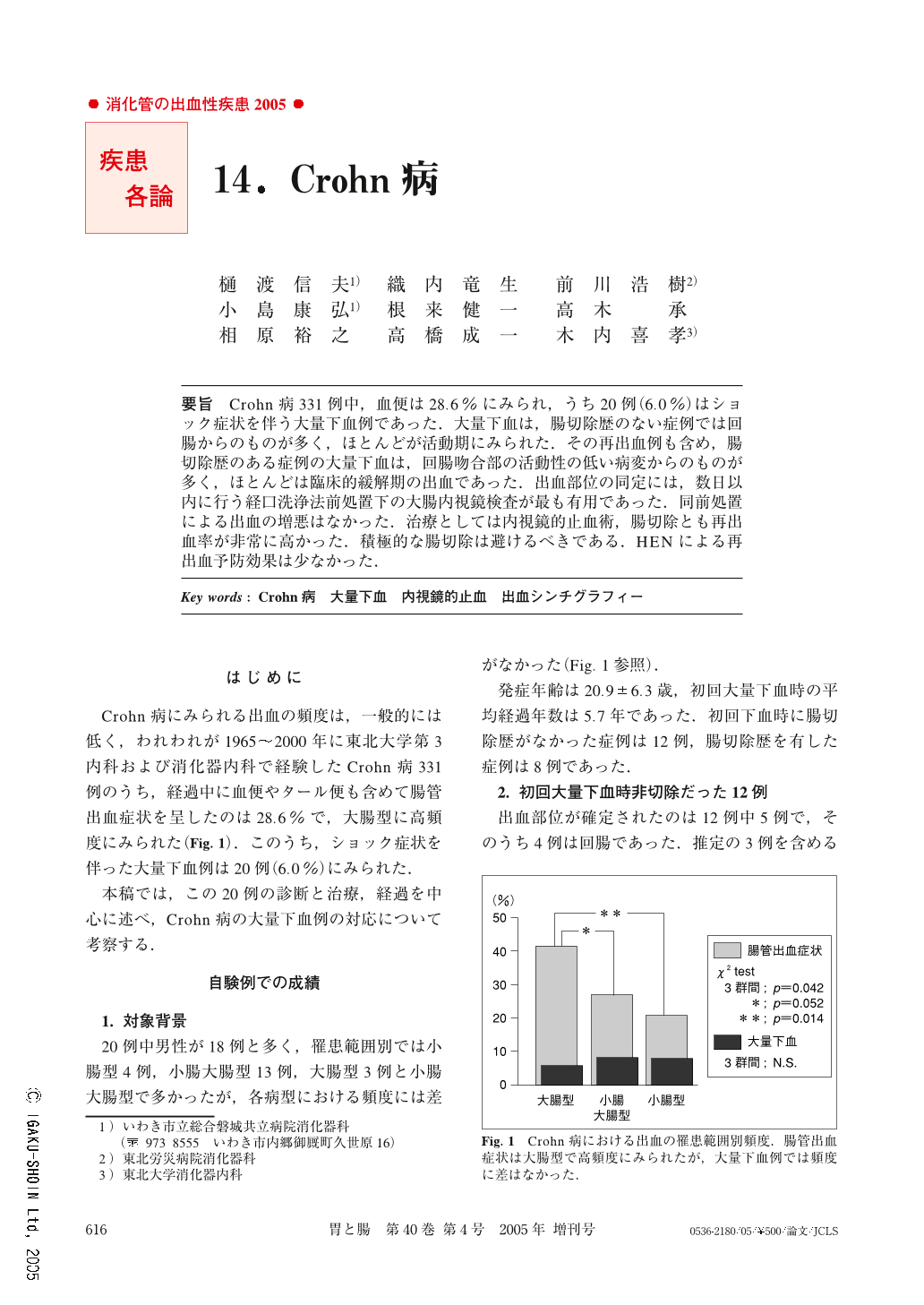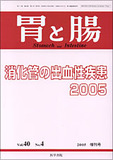Japanese
English
- 有料閲覧
- Abstract 文献概要
- 1ページ目 Look Inside
- 参考文献 Reference
- サイト内被引用 Cited by
要旨 Crohn病331例中,血便は28.6%にみられ,うち20例(6.0%)はショック症状を伴う大量下血例であった.大量下血は,腸切除歴のない症例では回腸からのものが多く,ほとんどが活動期にみられた.その再出血例も含め,腸切除歴のある症例の大量下血は,回腸吻合部の活動性の低い病変からのものが多く,ほとんどは臨床的緩解期の出血であった.出血部位の同定には,数日以内に行う経口洗浄法前処置下の大腸内視鏡検査が最も有用であった.同前処置による出血の増悪はなかった.治療としては内視鏡的止血術,腸切除とも再出血率が非常に高かった.積極的な腸切除は避けるべきである.HENによる再出血予防効果は少なかった.
At Tohoku University Hospital, hematochezia occurred in 28.6 % of cases and massive hemorrhage occurred in 6.0 % of cases in Crohn's disease. Massive hemorrhage tended to develop from active ileal lesions in nonoperated patients.
On the other hand, in Crohn's patients with resected bowel, massive bleeding started from inactive minute lesions, especially within the ileal anastomosis. Most of the bleeding points were discovered by colonoscopy under bowel preparation by polyethylene glycol electrolyte lavage solution, within 5 days after massive bleeding. As management of massive bleeding, endoscopic homeostasis procedures, namely, ethanol injection, clips, and so on were used, when we detected the bleeding points through videocolonoscopy. If we could not control the massive bleeding, we were obliged to use surgery. In patients who had received homeostasis by endoscopic procedures or bowel resection, recurrent bleeding usualy developed. Home enteral nutrition (HEN) was ineffective in preventing recurrent bleeding. At present we have no therapy that can prevent these episodes.

Copyright © 2005, Igaku-Shoin Ltd. All rights reserved.


